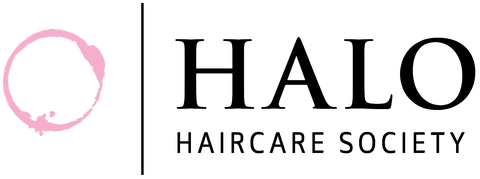Trichorrhexis Nodsa what is it and how can we stop it from happening?
Trichorrhexis Nodsa (nodes) are little white dots that can be present throughout the hair shaft, but in my professional experience is more commonly seen on the ends of the hair. Nodes are thickened/ weak points which break off easily and are generally caused by excessive styling and chemicals. But let’s delve deeper and help you stop the nodes from recurring.
Nodes are common and I regularly will find them when twirling my finger through the ends of my hair. Yes, you would suppose being a hairdresser with a passion for healthy hair I wouldn’t be faced with such hair attributes, but I am, and my hair is susceptible to them especially if not cared for correctly.
Are they just a form of spilt ends? No, they are different. The very end of your hair may not even be spilt but when the node breaks of the ends will be and will spilt further up the hair shaft. Nodes cannot be repaired; they must be cut off. Yes, you can hide them under a layer of protection but sorry to say nodes do need to be removed to keep hair healthy and long.
If you are susceptible to this common healthy hair threat then here are my top tips to stop them coming back for good.
Start with cutting them off! I know you don’t want to hear that this is my top tip, especially as you are more likely to have them if you are growing your hair. But they serve no purpose in long healthy hair and if you don’t trim your hair regularly it will result in broken hair which will more likely be shorter than a haircut as it frays further up the hair shaft.
Once the nodes are removed it is now time to stop them coming back, and this starts with a good routine.
First let’s analysis your hair and routine. Do you heat style a lot? Do you have regular chemistry applied to your hair, colours, relaxers? Do you wet your hair or wash your hair regularly? Do you brush your hair excessively? What do your styling tools look like? What’s your diet like? Is your hair constantly exposed to environmental stresses? Think wind, sun, temperature changes. These are all questions which will help you see what is causing the damage. Once you identify the cause you can protect it from that in your routine.
Let's personalise your routine.
Less Heat – Ever seen tiny pieces of hair flying around when heat styling? those are nodes breaking off. I know that feeling when you get in to a habit of heat styling daily because your hair feels untidy, but can I tell you the only way to stop it looking untidy is to stop heat styling daily. This is because you are trying to smooth the cuticle down with heat which may temporally make your hair look better but it’s just causing damage which is revealed as soon as your hair is exposed to any environmental stress leaving your smooth style looking dull and lacklustre. Limit heat styling to 1-2 times a week and only on wash day. Always use our Hydrated Heat Halo and use it correctly by spraying hair evenly and smoothing the hair shaft down with hands, then protect your hair style by adding silk in to your night-time routine. Try just using one heat tool instead of blow waving and heated styling tools or try foam rollers to give your hair body or bounce. Our silk ribbons can also help to give loose curls by being gently wound around hair and slept in.
Hair Chemistry – For those of you that have fallen in to regular colouring or relaxers and are noticing the little nodes appear my top tip is to make sure your home haircare has a balance of protein, strength and hydration ( my recommendation would be our Hydrated Halo Shampoo and Strengthen and shine conditioner), add a weekly treatment to your hair like our Hydrated Halo Pre-Treat and always protect your hair after washing with our Tangled Toner it’s low molecule weight treatment helps to restore protein and hydration and contracts the cuticle to lock nutrients in and adds a lightweight moisture barrier to your cuticle for added protection. Always opt in for a bond repairing treatment when your stylists asks if you would like one with your chemistry service.
Wet hair – every time you expose your hair to water you break your hydrogen bonds which leaves your hair in a vulnerable position to damage. So, if you don’t heat style make sure you leave your hair to dry naturally without tying your hair up, never go to bed with wet hair and try to limit exposure to wind. This is because any friction on wet hair can lead to breakage and nodes. Water is a pH of 7 which opens the cuticle and swells your hair shaft which puts pressure on your cuticle. So, limit the time your hair says wet and try not to wet your hair daily. Be gentle when drying your hair try switching to cotton and blot dry your hair instead of rubbing and causing unnecessary friction on your hair.
Hydration – drink water and eat water rich food. Dehydration is one of the first things that can lead to weak points in your hair. So, drink up and feed your hair from the inside out.
Be gentle – brushing your hair and scalp is so good for your hair health, but only when done correctly and with the correct tools. Never brush your hair when wet. Instead, gently remove knots by smoothing conditioner down the hair shaft on wash day and use a wide tooth comb if needed. Pick a good quality brush that care for your hair. Boar Bristle Brushes are the known to be the best brush you can use on your hair and are still recommended world-wide by top stylists and professionals. Our Boar Bristle Brush is of the highest quality and will treat your strands with the integrity and respect needed to achieve healthy hair. But remember too much of a good thing can lead to bad things. Limit brushing your hair to twice a day maximum any tension on your hair can cause micro damage and can lift off essential oils leaving your strands unprotected. If you’re susceptible to nodes caused by over brushing ( I defiantly am ) try adding an oil like our Hydrated hair Oil to your strands first, helping to nourish and protect your cuticle. Never use brushes with ball tips this can get easily caught in your strands and cause immediate breakage.
Over washing your hair – we all like to feel clean right? but did you know those oils you naturally produce actually protect your hair. When you wash your hair daily you don’t give the oils time to nourish your strands naturally.
Styling tools – you may ask yourself if picking the best styling tool on the market will actually make a difference to the way your hair looks and feels. I’m telling you, they are not created equally. Here’s my recommendations on what to look for when buying your next tool. Ion technology is an important thing to look for when making a purchase for your hair health. This is because the ions split the water molecules in a smaller size leaving less swelling and less hydration and water loss. Ions also help to smooth the cuticle making it shiny and smooth. Ceramic coating on your straighteners and curlers are a must too. They glide better down the hair shaft and distribute heat evenly meaning your strands are less likely to nodes caused by tension and uneven heat. Also look for a temperature setting on your styler. My personal recommendations are using heat at 140 degrees based on the glass blowing theory which you can read up on our blog; Turning the heat on heat styling.
Sleep on silk – silk is the closet fabric to our hairs composition it helps to keep moisture and hydration in our hair. Doesn’t cause friction when you toss and turn. Keeps your style in place upon waking which means you won't need to wash or re style your hair with heat as often.
There are quite a few different reasons your hair may be susceptible to nodes but know they are common and if you take one piece of advice from this; don't break them off, cut them off!





1 comment
I used to get these all the time and never knew what they were. Since I’ve been using your haircut system I haven’t noticed any and I have been able to grow my hair longer without having any issues with strand breakage.